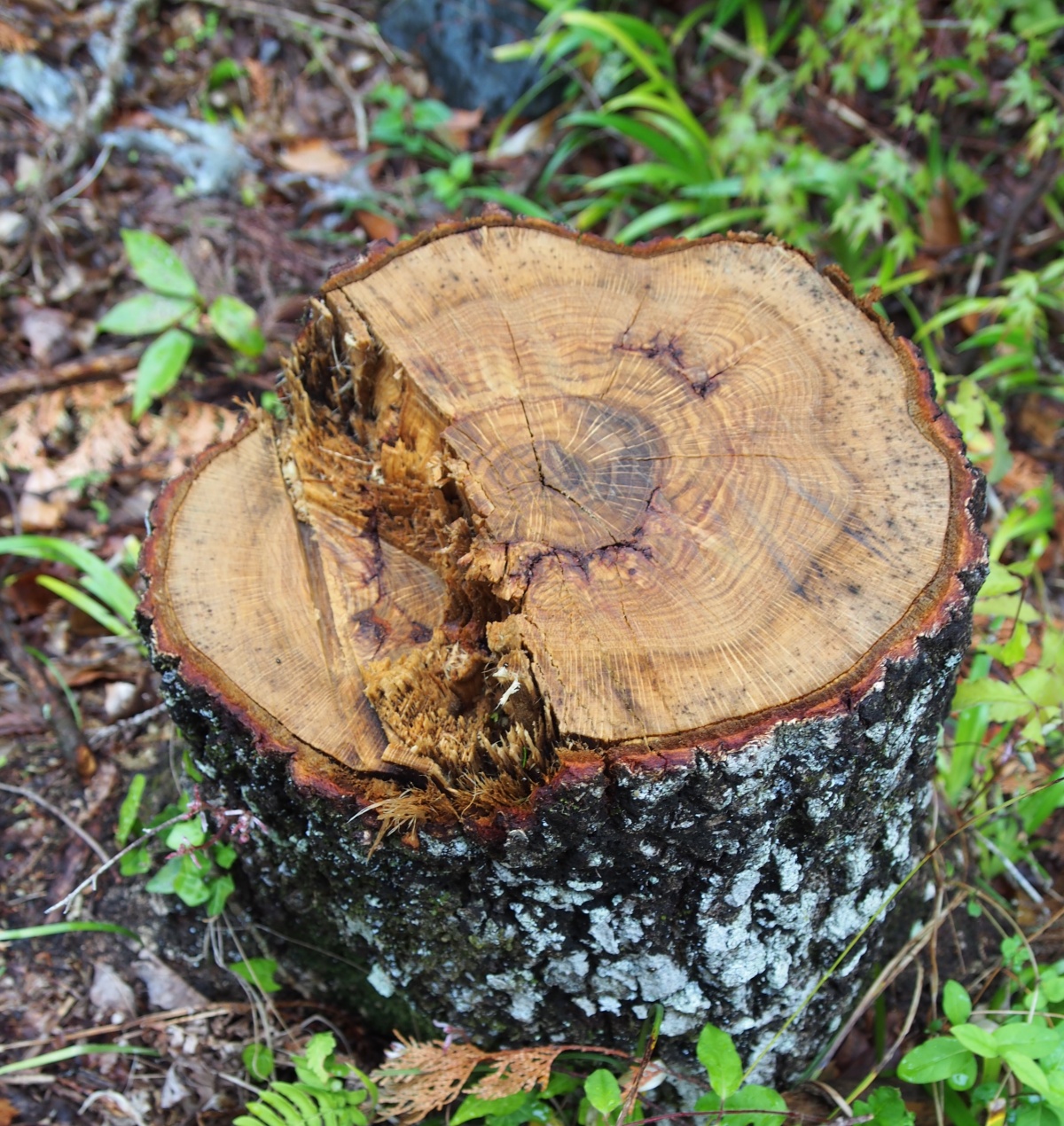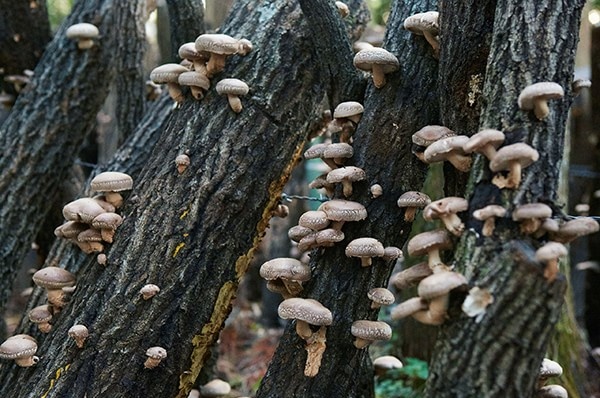We Eat Mushrooms, But What Do Mushrooms Eat?
Shiitake mushrooms are the fruit, so to speak, of the Lentinula edodes fungus. Although usually found packaged in dry form in Western countries, fresh shiitake mushrooms are a common sight in Japan. There are many different ways we can cook and eat shiitake, but what do shittake eat?
By FloChoosing the Substrate

https://cloudpot.wordpress.com/2016/05/26/shizuoka-shiitake-farm-%E9%9D%99%E5%B2%A1%E3%80%81%E3%81%97%E3%81%84%E3%81%9F%E3%81%91%E8%BE%B2%E5%9C%92/
Inoculating logs with the shiitake fungus is a common cultivation method in Japan and it's believed to produce better tasting mushrooms than using a sawdust medium. The shiitake fungus breaks down cellulose in wood and then consumes the by-product, glucose, as an energy source.
Like all fungi, the shiitake fungus can only grow on a limited number of tree species. Sawtooth Oak, Serrata Beech and Japanese Beech are the most common trees used for shiitake mushroom cultivation. Using the small logs and branches that sprout from stumps is more economical and time-efficient than using new trees planted from seed.
Inoculating the Logs
https://cloudpot.wordpress.com/2016/05/26/shizuoka-shiitake-farm-%E9%9D%99%E5%B2%A1%E3%80%81%E3%81%97%E3%81%84%E3%81%9F%E3%81%91%E8%BE%B2%E5%9C%92/
The farmers begin the inoculation process once the logs have been harvested from the forest. This is done by drilling holes in the logs and inoculating them with "spawn," which is the mix of the desired shiitake fungus strain, sawdust, grains and other nutrients. Although there's only one mushroom harvest per year, logs can be used for three consecutive years. These logs are ready to become mushroom food!
Sealing the Inoculation
https://cloudpot.wordpress.com/2016/05/26/shizuoka-shiitake-farm-%E9%9D%99%E5%B2%A1%E3%80%81%E3%81%97%E3%81%84%E3%81%9F%E3%81%91%E8%BE%B2%E5%9C%92/
Sealing prevents contamination and stops other fungi from entering the log. The holes in the wood are often sealed with wax—the wide-set polka-dot pattern is to ensure that the fungi have adequate space to grow and do not compete with neighboring networks for resources.
Mycelium Growth
https://cloudpot.wordpress.com/2016/05/26/shizuoka-shiitake-farm-%E9%9D%99%E5%B2%A1%E3%80%81%E3%81%97%E3%81%84%E3%81%9F%E3%81%91%E8%BE%B2%E5%9C%92/
The logs are then left uncovered near the forest for over half a year until the mushrooms, the fruiting bodies of fungi, emerge in either spring or fall. Farmers must keep the logs moist and cool.
During this time, the mycelium, the vegetative part of the fungus, grows and branches in and around the wood—much like roots in soil. As you can see above on the first year logs (post-inoculation and pre-fruiting), the white polka dot-like patterns are the branching mycelium networks.
Harvesting Shiitake Mushrooms
The mushrooms emerge when the shiitake fungus starts to fruit. The farmers usually bring the logs back indoors to the laying yard at this stage in order to prevent animals or other pests from eating or damaging the mushrooms.
After the harvest, the shiitake wind up in grocery stores and restaurants, ready to be eaten.



